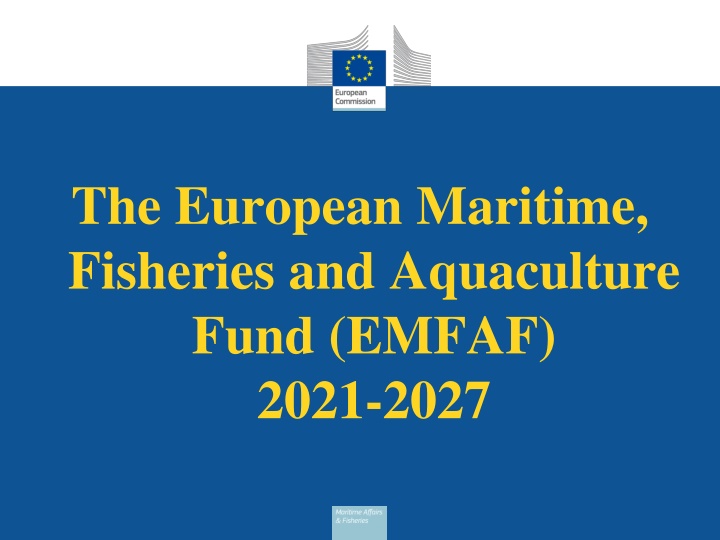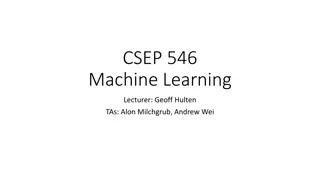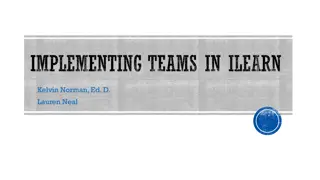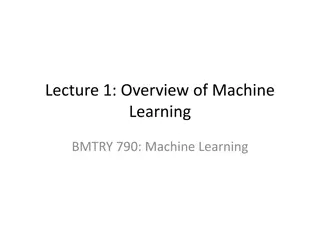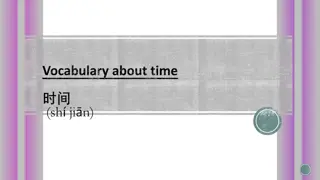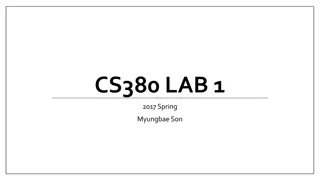Machine Learning 2021 Course Overview with Mandarin and English Versions
This course, led by Hung-yi Lee, offers both Mandarin and English versions, providing a comprehensive introduction to machine learning with a focus on deep learning. The course covers topics such as Computer Vision, Human Language Finance, and the latest ML technologies. Students can complete assignments online using Python, particularly PyTorch, and Google Colab for hardware needs. No prerequisite test is required, making it accessible to all interested learners.
Download Presentation

Please find below an Image/Link to download the presentation.
The content on the website is provided AS IS for your information and personal use only. It may not be sold, licensed, or shared on other websites without obtaining consent from the author.If you encounter any issues during the download, it is possible that the publisher has removed the file from their server.
You are allowed to download the files provided on this website for personal or commercial use, subject to the condition that they are used lawfully. All files are the property of their respective owners.
The content on the website is provided AS IS for your information and personal use only. It may not be sold, licensed, or shared on other websites without obtaining consent from the author.
E N D
Presentation Transcript
The European Maritime, Fisheries and Aquaculture Fund (EMFAF) 2021-2027
Scope of the EMFAF Key contributor to the European Green Deal Achieving the objectives of the common fisheries policy (CFP) - Sustainable and low- impact fishing - Efficient market for fishery products - Sustainable aquaculture - Structural management of fisheries and fleets - Competitiveness of the fishery and aquaculture sector - Fair standard of living in coastal areas - Collection of scientific data for fisheries management - Control of fishing activities Contributing to the Biodiversity Strategy Contributing to EU climate and environmental objectives Contributing to the EU maritime policy - Protection and restoration of aquatic biodiversity and ecosystems - Sustainable blue economy - Contribution to the overall target of 30% of expenditure under the EU budget spent on climate objectives - Integrated governance and management of the maritime policy (e.g. maritime spatial planning) - Achievement of a good environmental status in the marine environment - Contribution to the overall target of expenditure under the EU budget spent on biodiversity objectives (7.5% of annual spending in 2024 and 10% of annual spending in 2026 and 2027) - Maritime surveillance and security - Implementation of marine protected areas - International ocean governance - Promotion of the circular economy
General framework Shared management: national programmes prepared by Member States and approved by the Commission Direct management: work programmes prepared by the Commission
Financial framework Overall budget for 2021-2027: EUR 6.108 billion in current prices Budgetary resources for shared management: EUR 5.311 billion 87% National allocations established on the basis of the 2014- 2020 distribution key Budgetary resources for direct management: EUR 797 million 13% Rate of public aid: in principle 50%, but can be modulated up to 100% based on the added value of the operation
Flexibility and result orientation Focus on ends (objectives) rather than on means Flexibility for Member States to define eligibility rules (subject to conditions for certain investments in the fishing fleet to avoid harmful subsidies ) Discontinuation of the pre-defined measures of the 2014-2020 framework (e.g.: one broad Specific Objective on the protection of biodiversity and ecosystems, without predefined actions) Flexibility and result orientation go hand in hand importance of the performance and monitoring framework
The 10 EMFAF Specific Objectives Strengthening economically, socially and environmentally sustainable fishing activities Increasing energy efficiency and reducing CO2 emissions through the replacement or modernisation of engines of fishing vessels Promoting the adjustment of fishing capacity to fishing opportunities in cases of permanent cessation of fishing capacity and contributing to a fair standard of living in cases of temporary cessation of fishing activities Fostering efficient fisheries control and enforcement, including fighting against IUU fishing, as well as reliable data for knowledge based decision making Promoting a level playing field for fishery and aquaculture products from the outermost regions Contributing to the protection and restoration of aquatic biodiversity and ecosystems Promoting sustainable aquaculture activities, especially while ensuring that strengthening the competitiveness of aquaculture production the activities are environmentally sustainable Promoting marketing, quality and value added of fisheries and aquaculture products, as well as processing of these products Strengthening sustainable sea and ocean management through the promotion of marine knowledge, maritime surveillance and/or coast guard cooperation Enabling a sustainable blue economy in coastal, island and inland areas, and to fostering the sustainable development of fishing and aquaculture communities
What about Overseas Countries and Territories? Eligible under both types of management: Under shared management: all or part of an operation may be implemented outside of a Member State, including outside the Union, provided that the operation contributes to the objectives of the programme Under direct management: legal entities established in a Member State or in a third country are eligible. This covers entities established in OCTs as long as they are established in accordance with the law of the Member States to which OCTs are linked. What matters is the purpose of the operation, not its location
Programming under shared management Main elements of national programmes Need for strategic coherence across: A SWOT analysis (Strenghts, Weaknesses, Opportunities and Threats) to identify the needs A description of the types of actions envisaged for each Specific Objective to address the needs A performance framework along output and result indicators A financing plan showing the distribution of financial resources across the Specific Objectives
Useful links fisheries/funding/emfaf_en - The information on this page is based on the provisional Regulation. The Regulation is in the process of being adopted and the information will be updated accordingly. https://ec.europa.eu/oceans-and- agreement on the EMFAF and for future calls for proposals under direct management by the Commission. This is also the page to follow for future news on EMFAF
